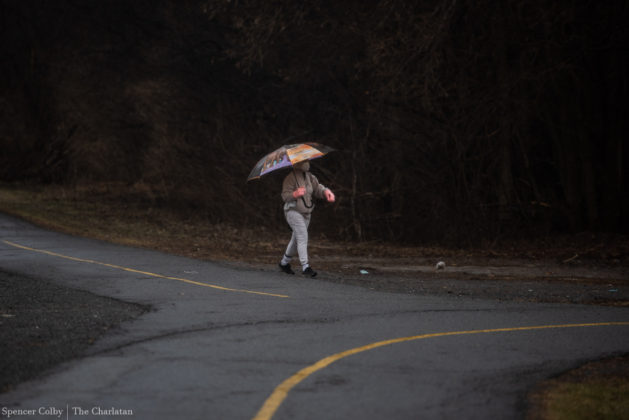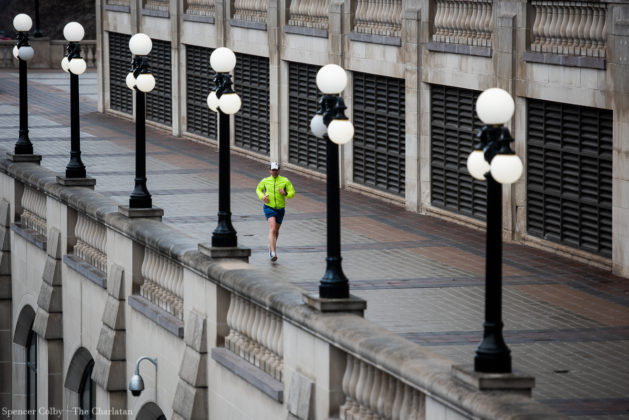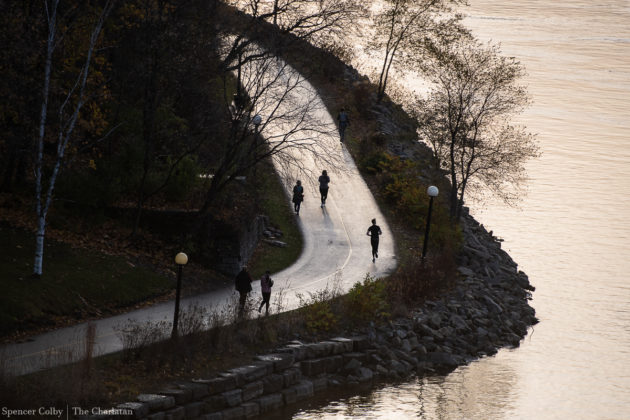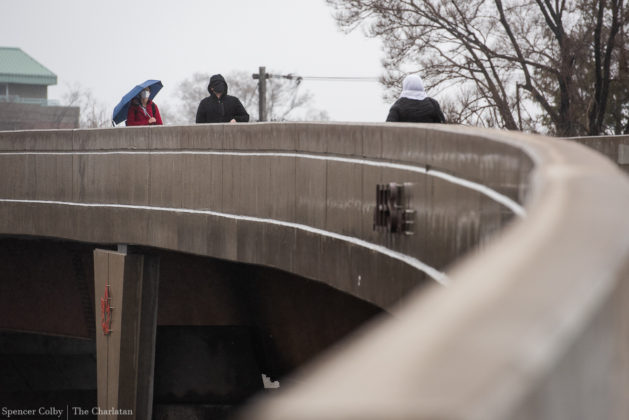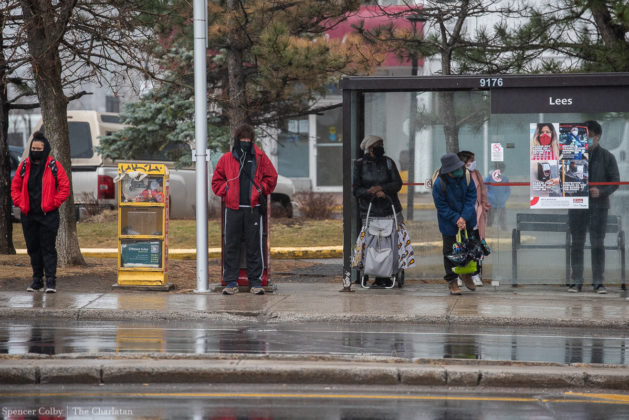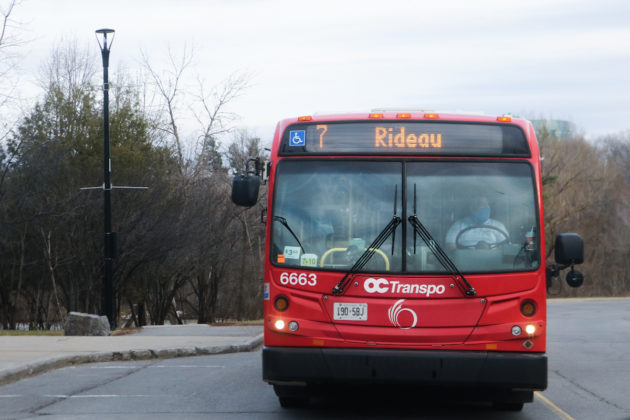Navigating bustling LRT stations, parking a bike in athletics and sprinting to a crowded class likely feels foreign to Carleton University students after over a year of the COVID-19 pandemic.
During online learning, most students’ morning routine consists of rolling out of bed, walking to a computer and sitting in Zoom waiting rooms. With signs of a gradual return to campus on the horizon, it’s time to start thinking about commuting once again.
In a pre-pandemic survey of the different methods of transportation students at Ottawa universities and colleges use, the majority of Carleton students said they used public transit, followed by driving, walking and cycling to get to school.
Although nature surrounds the Carleton campus and the area is connected to several bike paths, the survey shows Carleton students are less likely to use active methods of transportation—such as walking or biking—than students at the other Ottawa colleges and universities included in the survey.
Carleton released its campus transportation strategy in 2019, addressing shortcomings in cycling, pedestrian and transit facilities. Over two years and one global pandemic later, transportation infrastructure progress on campus looks different from the original plan.
Despite pandemic-related changes to the campus commute, some experts say the next few years will be critical in achieving an environmentally-sustainable campus. The strategy includes encouraging more active modes of student transportation to reach that goal.

Factors influencing active commuting
To measure how well a location can support an active lifestyle, experts refer to the Canadian Active Living Environments Database. Otherwise known as Can-ALE, the database is a set of measures that determine how walkable communities are.
Susanna Abraham Cottagiri, a Carleton school of mathematics and statistics research associate, along with professor Paul Villeneuve contributed to a study determining whether natural green spaces and walkability influence commuting. Using Can-ALE and the Normalized Difference Vegetation Index, which measures the density of nature, they determined an area’s nature and walkability play a role in active commuting.
Though Abraham Cottagiri and Villeneuve’s data focused on school-age children, the data’s trends were found to be relevant to other age groups.
Even before COVID-19 interrupted most Canadians’ commuting routines, their analysis found students had low rates of active transportation.
“About only one in five children actively commuted to school, and with increasing age, the prevalence decreases,” Abraham Cottagiri said. “The beneficial effects of greenness, [from] what we found, are mostly in highly dense [populated] areas.”
With trees lining the streets and a river on campus grounds, Carleton offers greenspace across campus for its heavy stream of visitors. The transportation strategy showed upwards of 900 people crossed the street at Minto CASE and Campus Avenue during peak morning hours.
A 2013 report by the Canadian Council of Motor Transport Administrators found that a lack of pedestrian safety was plaguing urban cities. According to the transportation strategy, on-campus pedestrian safety still needs work.
Yasser Hassan, professor and chair of Carleton’s civil and environmental engineering department, said although Carleton’s underground tunnel system allows pedestrians to walk long distances even in bad weather conditions, there is still room for improvement to walkability on campus.
“Underground is excellent, but when you go above ground there is a significant interaction between vehicles and pedestrians at that [Campus Avenue and Minto CASE] crossing,” Hassan said.
Hassan said the conversion of Campus Avenue to a one-way road in 2019 was a good start to increasing safety, but that the university should also add raised intersections and speed tables, and increase signage on campus roads.
New pedestrian safety measures could aid students during a gradual return to campus, but as classes take place online for now, there is currently less foot traffic on campus.
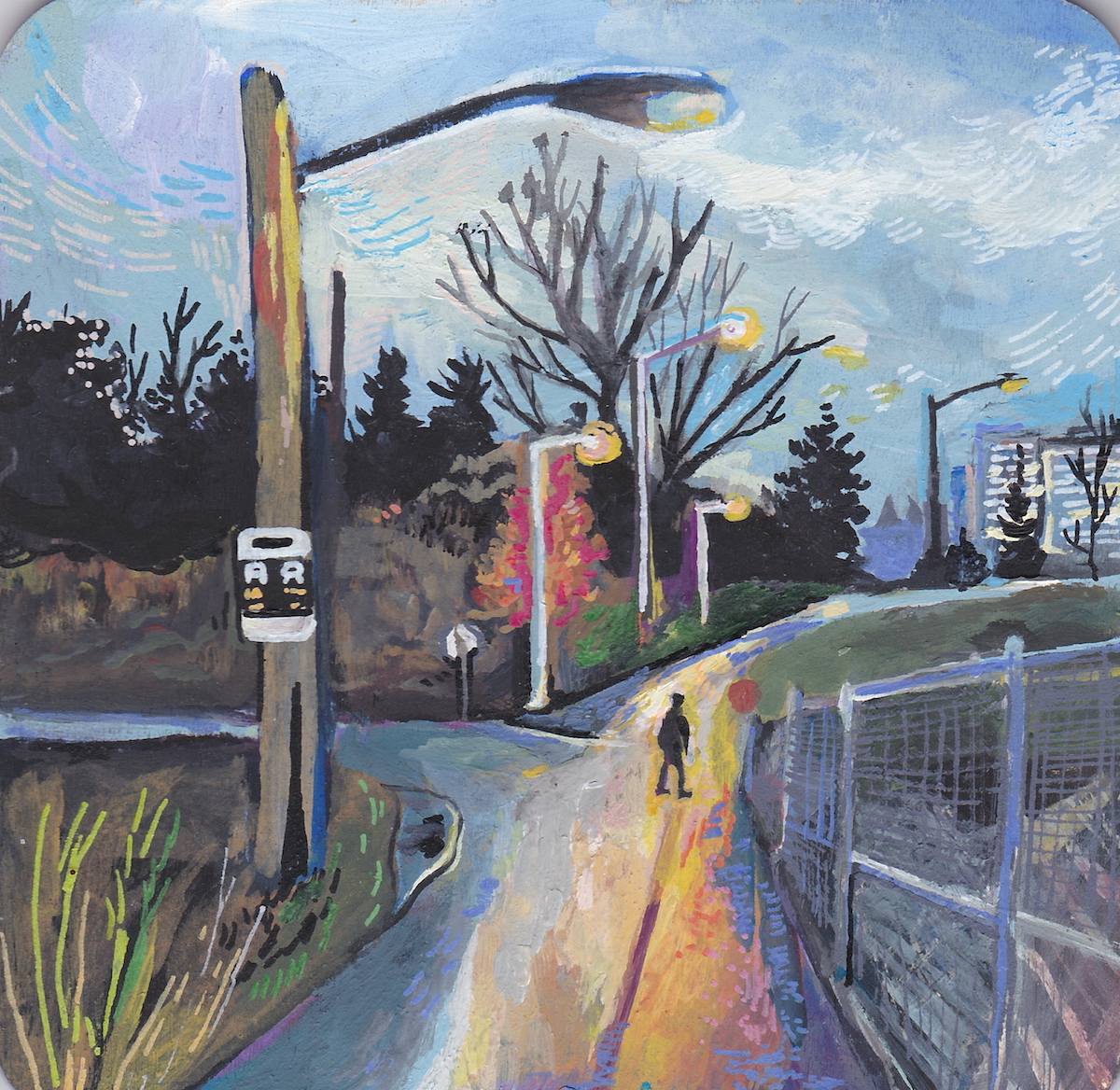
“I actually opted out of the U-Pass, just because I wouldn’t be able to go to campus anyway, so I focused on walking and biking,” Candelaria Castro said, “and then this semester since we’re in winter, I kept the U-Pass to be able to bus around to work during the cold winter months.”
A 2016 study Villeneuve conducted found commuters in greener communities often do more physical activity in the summer—similar to Candelaria Castro’s seasonal commuting.
“Because people probably don’t have as many outlets as they’ve had in the past [due to COVID-19], being close to greenness, being close to parks, being close to nature probably has larger impacts [on commuting] now than it has in the past,” Villeneuve said.
Candelaria Castro said her neighbourhood is full of parks and walking paths. “COVID definitely made me walk maybe more than I would have otherwise,” she said.
Safely putting pedal to the metal
Candelaria Castro said she might start biking again when warmer weather comes to Ottawa. If she does, she’ll be one of few student cyclists.
In its transportation strategy, Carleton said 50 per cent of students have access to bikes, but only two per cent use them.
Hassan said he thinks Carleton lacks enough cycling paths to promote biking on campus as a transportation method.
“Maybe to get to the campus is good, but on the campus itself, it is not that easy to navigate your bike once you are in,” he said.
The plan outlines future bike paths to be created across campus within the next five to 10 years, including a new path in the underpass near the closed O-Train station.
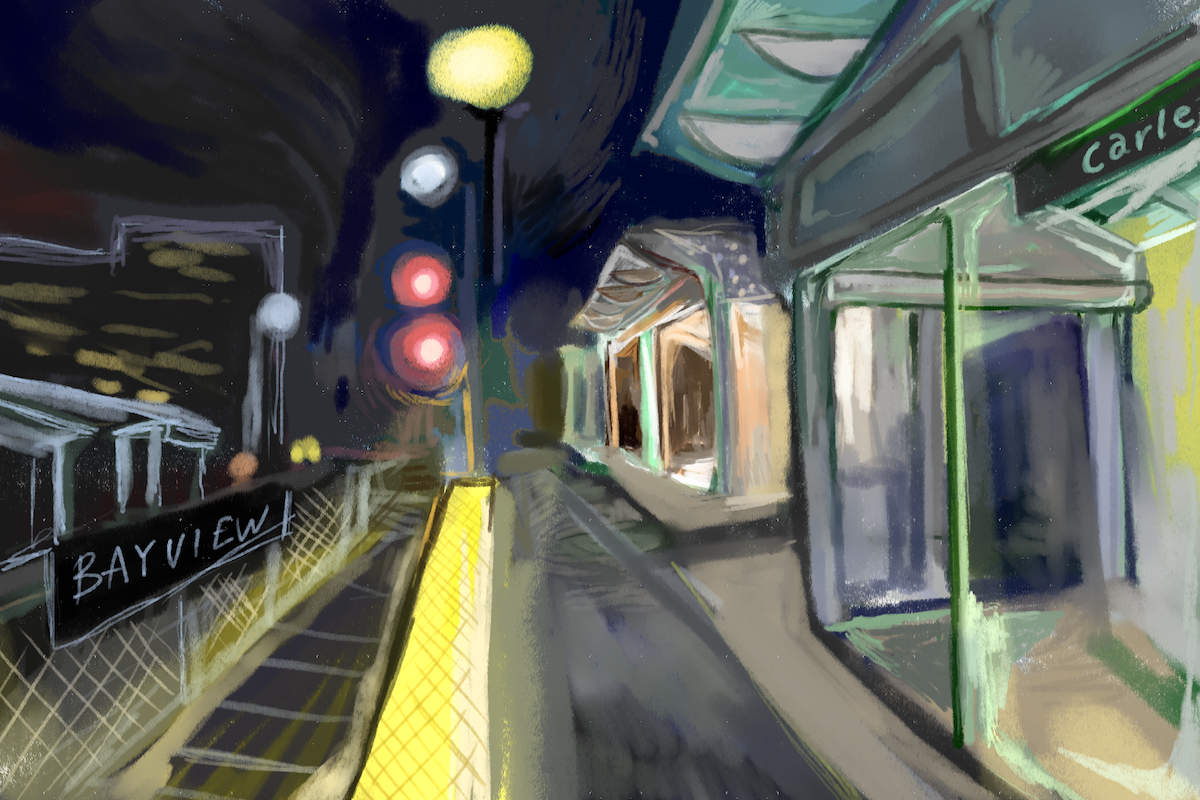
“I have been hit while biking at the school by a bad driver. This may have been due to the panic exiting the school in busy hours,” Gauthier wrote in an email.
Cyclist safety issues are not limited to the Carleton campus. A 2013 study found public schools in Canada lack elements that promote safe cycling.
The study included 436 public schools across Canada. Only 10 per cent of schools had bike lanes. Of those, 81 per cent had no physical barrier or space separating cyclists from vehicle traffic.

Still, Villeneuve and Hassan both said safe bike racks are limited across campus, which could be deterring cyclists.
“The gym is too far and very secluded in the evenings, so it is really not the safest place for anyone,” Hassan said.
More indoor and outdoor bike racks could be arriving on campus, though they are currently a medium priority for Carleton, according to the transportation strategy.
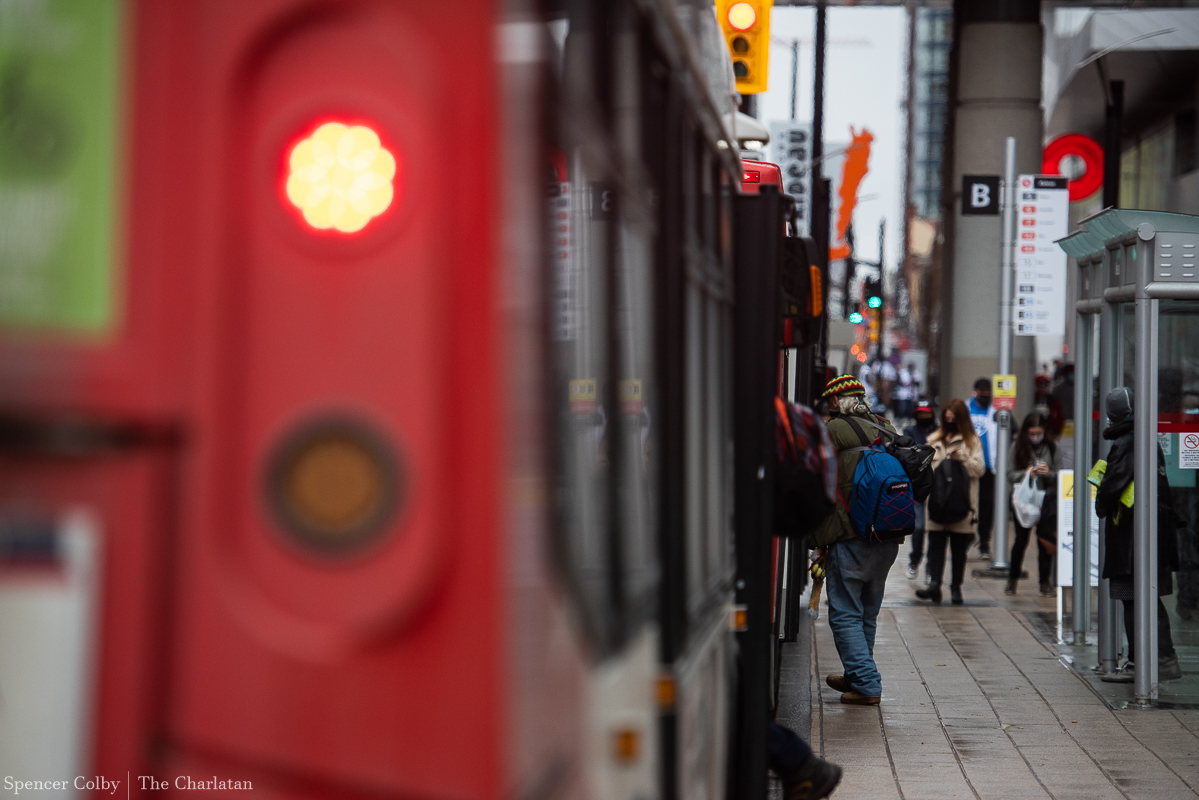
Sustainable transportation to combat climate change
Though COVID-19 has changed the way we commute, Villeneuve said climate change will cause the future of transportation to shift even more dramatically.
“Cities are recognizing that greenness has a lot of important health benefits, from getting people to be more physically active to reducing extreme heat from urban heat islands from concrete,” Villeneuve said.
“Over and above what’s going on with COVID-19, I think a lot of cities worldwide are going to continue to find ways to be creative, to reduce the potential harms from climate change.”
Though sustainable options such as walking aren’t an option for all, the transportation strategy suggests pedestrian-friendly infrastructure is in Carleton’s future. One change could be coming to the northern side of Library Road.
Wedged between the quad and Rideau Canal, the plan says this area could be transformed into a street for pedestrians and cyclists. Originally scheduled to be completed by the 2021-2022 academic year, it’s unclear how the LRT expansion’s postponement and the pandemic could affect the timeline of this project.
Hassan said he believes once Carleton’s LRT system is put into place, the campus will make a much larger step towards sustainability.
“Our problem at Carleton is to get into the campus and get out of that campus because we are not really very well-served by public transportation, other than the light rail that is currently under construction,” he said.
In a 2011 TRANS committee study, those commuting to the Carleton campus during peak morning periods were most commonly travelling from Kanata/Stittsville, Alta Vista, the Ottawa Inner Area, and Merivale.
Those commutes to campus often stretch into one to two-hour journeys consisting of crowded stations and several transfers, which Hassan said detracts from the sustainability and ease of usage of public transit.
During the pandemic, rates of public transit usage have greatly declined. At an Oct. 21 transit commission meeting, John Manconi, general manager of Ottawa transportation services said ridership plummeted 70 per cent in 2020.
Candelaria Castro is one of the many Ottawa residents who has reduced their public transit usage because she is concerned she might be exposed to COVID-19 while taking public transportation.
“I tried to use the bus as little as possible,” she said.

Highlighting a desire to move towards sustainable transportation, Carleton cites carpooling, bike and car-sharing, walking and public transportation as options available across campus on the school’s website. To promote carpooling, Carleton offers a special parking pass for those who drive in together.
Although these sustainable transportation services exist, some Carleton students say they are not advertised well enough.
Though Candelaria Castro lived on residence last year, she said she had no idea these services existed. The transportation strategy says Carleton should increase its advertising of bike-sharing options.
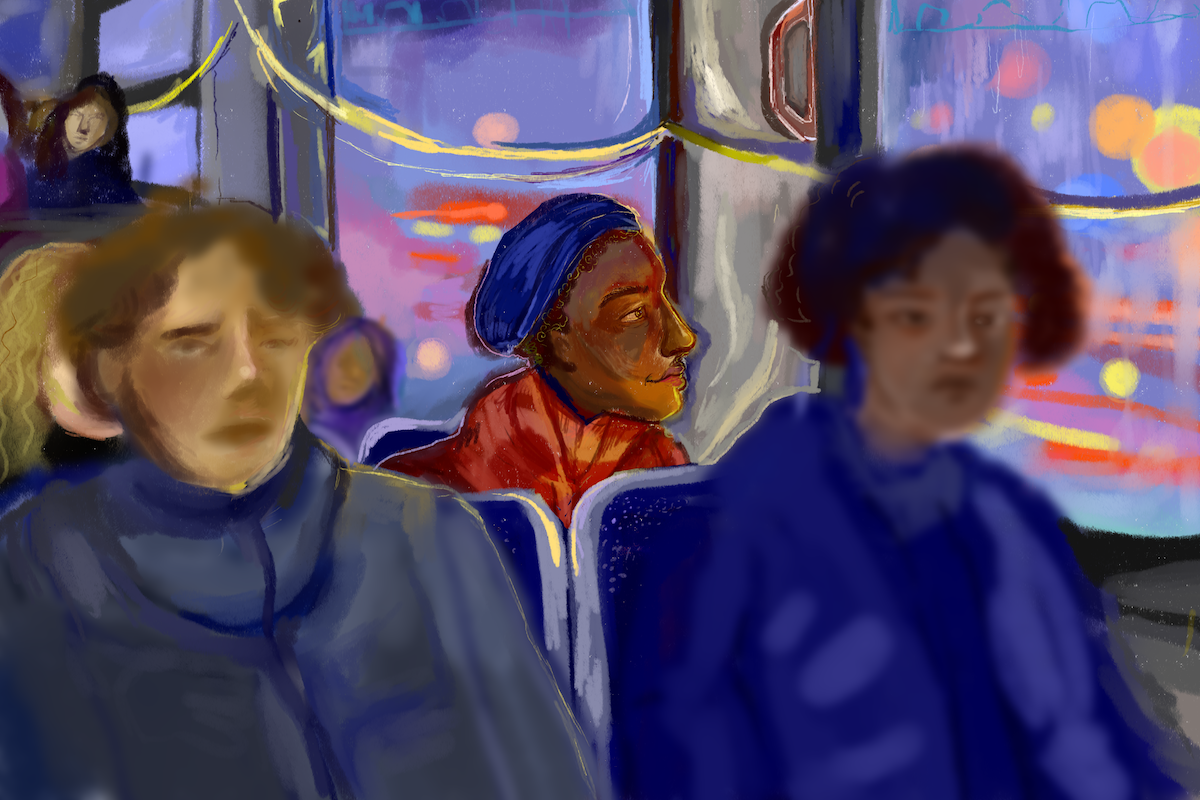
A return to commuting
Based on the university’s plans, the biggest shift for returning students who left campus in March 2020 could be commuting—especially considering that with no trains, bussing will be the only available form of public transportation.
With the uncertainty of the pandemic and major commuting changes, it may feel like things will never be the same. But Hassan said he thinks sooner or later, commuting and public transportation will go back to normal.
“The fact that we as human beings don’t remember the last pandemic before [COVID-19], it means that our memory really did not retain it and we adjusted our behavior after the pandemic ended, and we went back to normal,” he said.
“I expect that things will go back to normal at one point of time. It is not a matter of if, it is a matter of when.”
Featured graphic by Cara Garneau.


